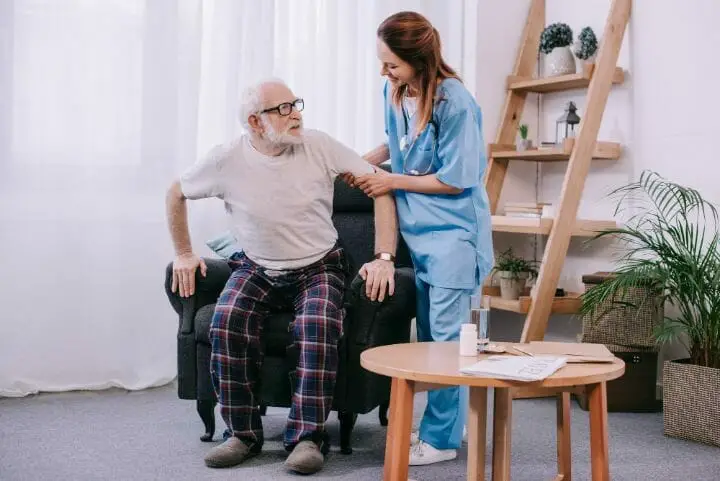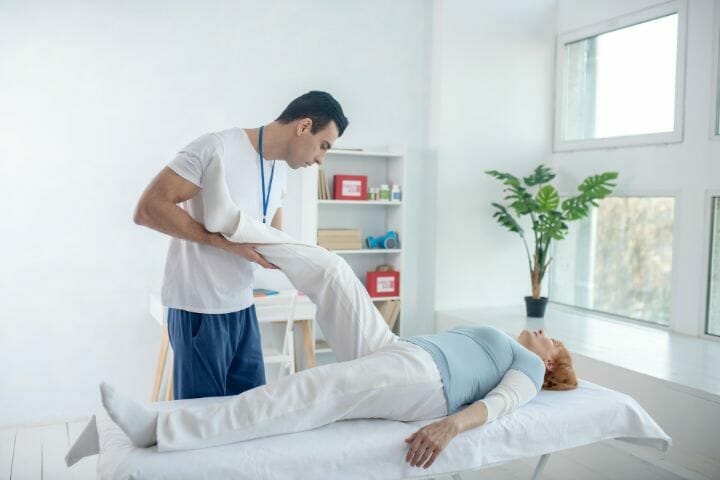As an , and loss of are to be expected. With increasing age, is a major cause for concern as it causes and reduction in .
The world is harder for people with less to get around, but the good news is that there are exercises you can do to increase your .
Aside from flexibility exercises, strength training exercise, and resistance training at low-intensity levels, older patients can improve their walking and mobility with the following tips:
Here are Some tips on how to get an again:
1. Get Moving
are prone to lying or lounging around on their most comfortable recliner or couch all day long. But you and I know that simply sitting around won’t help build muscle. What you need to do is to help your elder parent maintain an active lifestyle – or introduce them to move and get into an active lifestyle as soon as possible.
This is especially important if the older adult is a stroke survivor, or has had some surgery like knee replacement surgery, hip surgery, etc.
Being active engages your muscles and prevents atrophy.
We understand that starting all over again as you are older can be frustrating to say the least, but once you start on the road to recovery and gain , it becomes easier than ever.
Here’s how you can start again more enjoyable and easier:
- Join a senior group
- Meet people on meetup.com
- Take walks around the park or neighborhood
2. Get the Required
If this is the case, using a walking aid is highly recommended. The right can offer maximum while working all your muscles properly.
Just ensure that your beloved older adult is relying on the right mobility aid, meaning, if they only need a cane to help them walk, please ensure that they are using a cane and not a walker.
This is because if they use a walking aid that offers too much assistance, they will only be using less of their muscle strength and rely on the walking aid too much.
You might also like What Are the Different Walking Assistance Devices for the Elderly?
3. Work on Balance and
Balance is key as your starts to walk again. This is because improper balance can lead to slips and falls leading to further injury and .
A fall can set you back months, and if you break a hip or leg in the process, your mobility can end up worse than ever before.
Proper balance comes from engaging your core muscles, back, butt, and hips.
Here are a couple of exercises that will help an gain balance:
Standing on One Leg
- Stand next to a wall or bed. This is to brace yourself when you fall off balance.
- Try standing on one leg for short intervals of time. We advise that you start with your dominant leg as you start.
- Repeat the on both sides.
Side Leg Raises
- Lean on a wall or any strong surface.
- Use the muscles of the hip and the leg has to be lifted sideways.
- Repeat this on both legs.
Back Leg Raises
- Stand close to an strong surface.
- Lift your leg backward. Ensure that the is straight to engage the glutes.
Gentle Yoga
Now, you may already be aware of the many benefits that Yoga has to offer, but for seniors who are just recovering from a knee replacement surgery, hip fracture, or suffering from dementia, gentle yoga is a fun and effective way to counter muscle weakness and get walking again with ease.
4. Maintain a Healthy Weight
Surplus body weight puts more weight on the knees while and it is often the most complained about pain in an . The key is to balance exercise with diet as you start helping them to walk again.
Consult your doctor or a nutritionist who can help you determine your ideal body weight and provide you with a solid balanced diet to stay healthy and keep the extra pounds off.
You might also like Best Pedometer for Seniors
5. Engage in
Even if your elderly parent has never done any strength training exercises previously, it is essential that they start with light intensity strength training to gain muscle strength for walking again.
A personal trainer or physical therapist can help an older adult with strength training.
6. Consult Your Doctor
Before you start any form of exercise, you need to ensure that you don’t have a health condition that requires you to remain inactive for a longer period.
Discuss your with your medical professional and request a referral to a who can guide you with exercises or activities you can do to help you with , , and balance.
The doctor will be able to recommend a highly trained professional to provide you with the help and guidance you need to improve your mobility.
When an is engaged in some or , ensure that they have a safe environment around them, free from obstacles, and pointy surfaces.
Injuries for seniors can hinder any progress made on and can cause a serious loss of , depending on the severity of the injury.
Learning to walk after a
If your is a , they may require more time and effort to regain their and agility. You can use a , , or any other during the process.
Here are some tips for elderly adults to start after a
Focus on the Toes and Legs
It is normal for an elderly adult to experience issues with the toes after a , and this can make quite difficult.
What you can do is to try to pull their toes downward with your hands to improve their flexibility.
Stretch the Hips and Legs
Your legs and hips will also need to help you regain your balance.
Start with light-intensity exercises initially. Gradually work your way toward more advanced options as you regain your balance and start to get stronger.
Chair exercise for strength and better balance:
Start by trying a chair that begins by:
- Stand up straight and find your balance
- Gently shift your body weight to one side.
- Swing your other leg up to the side, then balance yourself for about 10 seconds, using the chair as support.
- Do this again by switching the legs often.
After some practice, try doing this without the chair’s support. The key is to re-learn how to maintain your balance and to regain strength in your legs without the help of a cane or walker.
You might also like Best Rehab Bikes for Wheelchair Users
Rehabilitation Exercises
As you’re learning to walk again, try some leg exercises for stroke patients that will restore your body strength. You can do this just by taking the help of your stationary bike to perform some leg lifts.
When you feel confident and get stronger the ability to walk more after having a stroke increases. Stay cautious and consult the therapists if you have concerns.
Lift weights: Start with small weights like a weight of two pounds every day. You can use soup cans for this. This will help you rebuild the strength in your upper body.
Stretch every day: Do stretches that are simple every day. Stretching can do wonders for your body’s ability to heal and get stronger. Doing chair yoga will help in stretching your body, you need not sit on floor for this.
Walk Regularly: If you’re feeling confident about walking more, take a stroll whenever you can to keep your muscles active. We recommend that you avoid sitting for too long to prevent any pain and stiffness.
We understand that phase of walking again is a difficult and slow process, especially for an older adult who has had some serious illness, suffered a stroke, had surgery, or is suffering from dementia and related illness. We hope that the article has given enough insights into how to get the elderly walking again.






